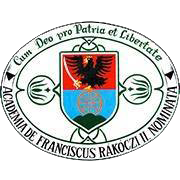Please use this identifier to cite or link to this item:
https://dspace.kmf.uz.ua/jspui/handle/123456789/4286Full metadata record
| DC Field | Value | Language |
|---|---|---|
| dc.contributor.author | Черничко Степан | uk |
| dc.contributor.author | Csernicskó István | hu |
| dc.contributor.author | Csernicsko Istvan | en |
| dc.contributor.author | Берегсасі Аніко | uk |
| dc.contributor.author | Beregszászi Anikó | hu |
| dc.contributor.author | Aniko Beregszaszi | en |
| dc.date.accessioned | 2024-10-03T10:06:37Z | - |
| dc.date.available | 2024-10-03T10:06:37Z | - |
| dc.date.issued | 2012 | - |
| dc.identifier.citation | In TEKA Commission of Polish-Ukrainian Cultural Ties. 2012. Volume VII., Issue 26. pp. 27-38. | en |
| dc.identifier.issn | 1733-2249 | - |
| dc.identifier.uri | https://dspace.kmf.uz.ua/jspui/handle/123456789/4286 | - |
| dc.description | Editorial Team: https://journals.indexcopernicus.com/search/journal/issue?issueId=148475&journalId=27334 | en |
| dc.description | Table of contents: https://journals.indexcopernicus.com/search/journal/issue?issueId=148475&journalId=27334 | en |
| dc.description.abstract | Резюме. Мовна політика визначає, який юридичний статус повинні мати певні мови. Виділяють три типи статусу мов: державна мова, офіційна мова, міноритарна мова. Мовна політика має особливу роль в багатомовних країнах. Адміністративно-територіальна одиниця, яка сьогодні відома як Закарпаття, є багатомовним регіоном. Територію сучасного Закарпаття у XX ст. поділяли між собою екілька держав, кожна з яких проводила свою мовну політику. Протягом XX ст. у регіоні шість разів змінювалась державна мова. У відносно короткий період такою мовою були угорська, чехословацька, російська та українська. Якщо брати за основу офіційне політичне та наукове тлумачення мовної ситуації Закарпаття щодо русинської мови, згідно якої русинська - діалект української, то українська мова увесь період XX ст. мала статус офіційної, а від 1991 р. - державної. Українська вживалась в освіті, культурі, в офіційному діловодстві. | uk |
| dc.description.abstract | Abstract. Language policy determines the legal status of languages. The three main levels that are most commonly distinguished are: the state language, the official language and the minority language. Language policy has a great role in multilingual countries. Transcarpathia is a multilingual region. The area of Transcarpathia belonged to several countries during the XXth century. Each of these countries had its own language policy. The state language was changed six times in the twentieth century. The state language status was fulfilled by the Hungarian, Czechoslovak, Russian and Ukrainian languages in a short period of time. According to the official standpoint of Ukraine, the Rusyn is the dialect of the Ukrainian language. Considering this point of view this means that the Ukrainian language was the official language in Transcarpathia through the XXth century and became the state language in 1991. The Ukrainian language was used in education, culture and offices. | en |
| dc.language.iso | uk | en |
| dc.publisher | Polska Akademia Nauk | en |
| dc.relation.ispartofseries | ;Volume VII., Issue 26. | - |
| dc.rights | Attribution-NonCommercial-NoDerivs 3.0 United States | * |
| dc.rights.uri | http://creativecommons.org/licenses/by-nc-nd/3.0/us/ | * |
| dc.subject | мовна політика | uk |
| dc.subject | статус мов | uk |
| dc.subject | українська мова | uk |
| dc.subject | статус української мови | uk |
| dc.subject | Закарпаття | uk |
| dc.title | Державний статус української/русинської (руської) мови на Закарпатті у ХХ столітті | en |
| dc.title.alternative | The status of Ukrainian (rusin) language in Transcarpathia in the XXth century | en |
| dc.type | dc.type.article | en |
| Appears in Collections: | Beregszászi Anikó Csernicskó István | |
Files in This Item:
| File | Description | Size | Format | |
|---|---|---|---|---|
| Chernychko_Stepan_Berehsasi_A_Derzhavnyistatus_ukrainskoirusynskoi_ruskoi_movy_na_Zakarp_2012.pdf | In TEKA Commission of Polish-Ukrainian Cultural Ties. 2012. Volume VII., Issue 26. pp. 27-38. | 132.08 kB | Adobe PDF | View/Open |
This item is licensed under a Creative Commons License





